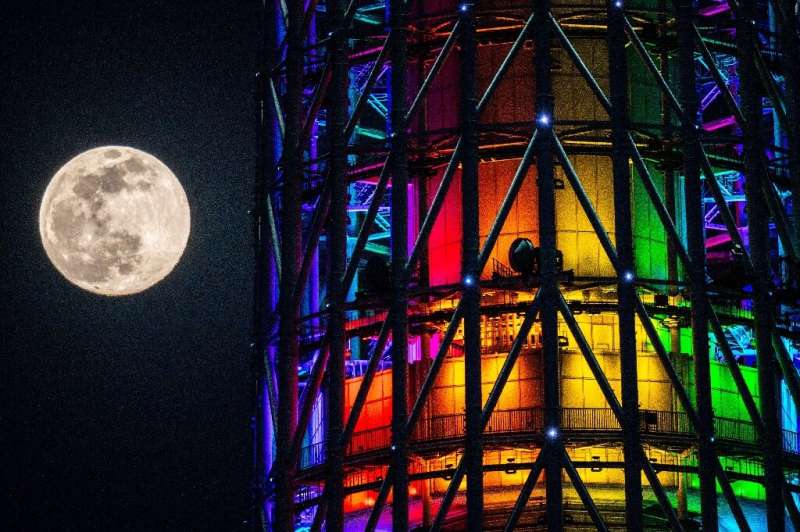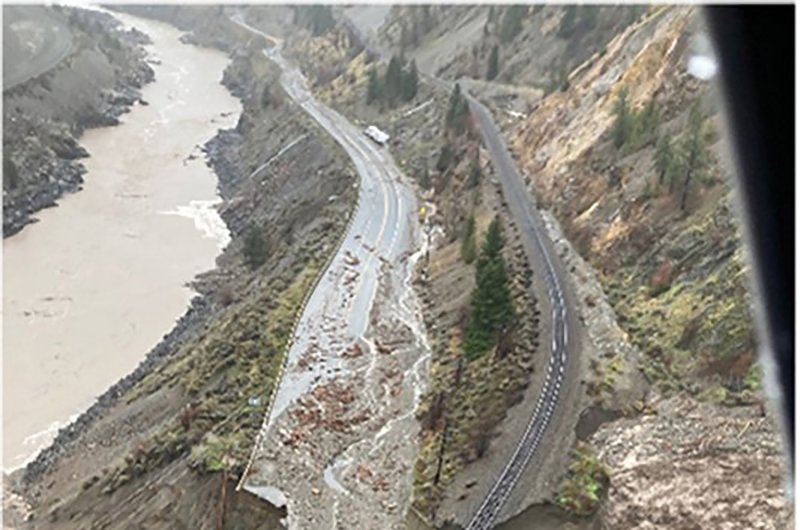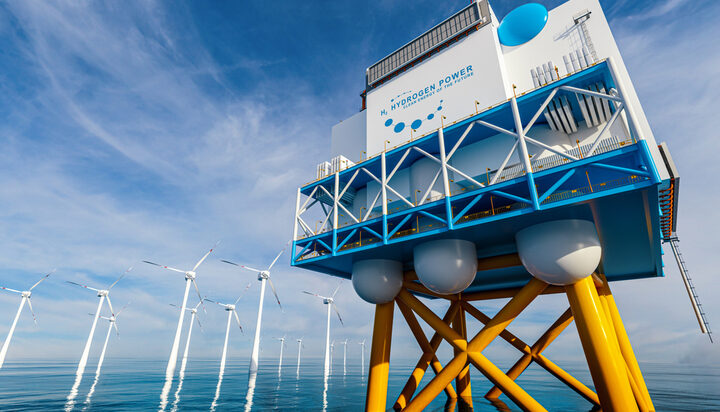Dangerous and dirty: 7 myths about hydrogen power debunked
Hydrogen power is a large part of net-zero energy plans – but is it really cleaner than fossil fuels? And will it ever be economically viable?

By Marco AlveráBBC
Published: 18th November, 2021
Hydrogen’s story goes back 13.7 billion years, to a time when the Universe was new-born, and very hot.
Hydrogen emerged from that primordial furnace in far larger quantities than any other element, and even today it dominates the cosmos. It is the main ingredient of stars, including over 90 per cent of our Sun, and a thin mist of it is scattered through space. About 60 per cent of the atoms in our bodies are hydrogen, and of course it is one of the two key ingredients in water.
Hydrogen is the simplest atom: just a single proton orbited by a single electron. It is odourless, colourless and very energetic.
Hydrogen makes an excellent fuel. You can heat your home or cook a meal by burning hydrogen, the same way many homes burn natural gas. One kilogram of hydrogen can release enough energy to drive a typical car for 130km or provide two days of heating for an average household. And of course, when hydrogen is burned in air, the only emission is water.
Or you can convert its energy into electricity, in what’s called a fuel cell. It performs essentially the same chemistry as a flame: combining hydrogen with oxygen to make water and release energy; except that in a fuel cell the energy goes into electricity instead of heat.
A big bonus for fuel cells is that they are typically very efficient. About 60 per cent of the energy in hydrogen can be converted to electricity to drive a car, compared to only 20 per cent of the energy in petrol. So, hydrogen vehicles can be three times more efficient.
Hydrogen is now set to play a crucial role helping us to tackle the climate crisis and wean the world off greenhouse gas emissions. In a net-zero CO2 world, studies estimate that hydrogen could account for up to a quarter of our overall energy needs. Yet, despite its central role in our carbon-free future, a number of myths about hydrogen persist.
Myth #1: Hydrogen is too dangerous to ever be used on a large scale
The Hindenburg airship disaster and the explosive power of the hydrogen bomb (also known as the H-Bomb) have done little for hydrogen’s public safety image; but it’s an unwarranted reputation.
The 1937 Hindenburg disaster, in which an airship lifted by hydrogen gas caught fire, killing 36 people, is still held up as an example of the element’s explosive properties.
Whether the airship’s hydrogen supply was the source of the fire or not remains controversial – there are several forensic examinations of the live pictures which show the fabric cover of the airship burning for about half a minute as the airship descended slowly to the ground, not the hydrogen exploding. All this is somewhat beside the point: nobody today is talking about flying around using giant bags of hydrogen gas.
Read more about hydrogen power:
Why we need a hydrogen power network to reach net-zero carbon
UK’s first hydrogen train to make its debut
Airbus reveals zero-emission hydrogen plane concepts
Neither is today’s push for hydrogen power linked to the blast of the H-Bomb.
The H-bomb is based on nuclear fusion, the process that powers the Sun. This is only achieved under extreme temperature and pressure many thousands of times higher than anything that will ever happen in your car.
Like any technology, hydrogen is not and never will be completely risk-free. Hydrogen can ignite anywhere between 4 per cent and 74 per cent concentration, giving it the widest flammability range of any fuel. Hydrogen can also detonate into an explosion (where the flame travels at supersonic speed) at concentrations of 18 to 59 per cent. And it doesn’t need much of a spark. At its most flammable concentration, of 28 per cent, a tiny spark with just 0.02 millijoules of energy is enough to ignite the stuff. Its flame, which is invisible, propagates very quickly.
The good news with hydrogen is that it disperses quickly. If it leaks into the open air, it rises (being much lighter than air) and its concentration very rapidly falls below the explosive level.
In a hydrogen-powered car, the type of tanks being developed to store the fuel are virtually indestructible. And even if the tank is pierced, hydrogen dissipates almost immediately.
This means that hydrogen, carefully managed, need be no more risky than the fuels we use today.
Myth #2: Hydrogen is a dirty fuel that is part of the problem, not the solution
This myth comes from a misunderstanding. Proponents of this theory look at how hydrogen is traditionally produced, rather than the green technology that is beginning to take off.
Most hydrogen today is produced using a process called steam methane reforming, which combines methane and water to produce hydrogen and carbon dioxide (CO2), a powerful greenhouse gas. The product is known as grey hydrogen. But that is changing.
Instead of using fossil methane as our hydrogen source, we can use electricity to break down water (H2O) into hydrogen (H2) and oxygen (O2). If the electricity comes from a renewable or low-carbon source, then this is clean ‘green hydrogen’, with essentially zero carbon emissions.
Read more about green energy:
Renewables overtake fossil fuels for UK energy output
New simulation shows 100 per cent renewable energy future
Green hydrogen is becoming an increasingly attractive option because the cost of renewable energy is plummeting. Ten years ago, renewables such as wind and solar were expensive, at around £400 per megawatt hour. In 2021, a solar auction was won in Saudi Arabia, for the equivalent of around £7.30 per megawatt hour.
At the same time, the machines (electrolysers) used to make green hydrogen will become much cheaper as the industry grows in size, and develops more efficient equipment, or larger equipment with economies of scale. Green hydrogen can soon be cheaper than grey.
There are some other colourful options in the mix, too.
Blue hydrogen is made using methane (CH4) in a similar way to grey hydrogen, but instead of releasing the CO2 into the atmosphere, this is captured and buried underground or, even better, turned into new products such as plastic and construction materials. Blue hydrogen has low CO2 emissions provided the natural gas used to make it does not leak when it is produced and transported, and that a high proportion of the CO2 can be captured.
Next up is turquoise, which uses a process called pyrolysis to heat up methane in the absence of oxygen, leaving hydrogen and the carbon as a solid material that can be used for construction, as well as making tyres.
The rainbow is completed by pink hydrogen, which uses electricity powered by nuclear energy to split water into hydrogen and oxygen using the electrolysis process.
Myth #3: Hydrogen is inefficient and not economically viable
Of course, using renewable electricity directly is more energy-efficient than first converting it to hydrogen, then using that for power.
But for many things, direct electrification is impossible or unfeasible. Heavy industry such as steelmaking needs chemical inputs, and green hydrogen can replace CO2-emitting metallurgical coal or fossil-fuel based chemicals. Many industries also need high temperatures, which are expensive to produce with electrical heating. Long-range transport such as trains or shipping, and winter heating in many temperate areas such as the UK, have such huge energy demands than it is impractical to store enough electrical energy; but hydrogen is easy to store in pressurised tanks, or large caverns excavated in rock salt deep underground.

The Hindenburg airship caught fire in 1937 and sparked worries about using hydrogen in passenger vehicles © Getty Images
Using hydrogen to store or transport energy in a smart combination with renewables will lead to the lowest-cost energy system, especially considering that hydrogen is also set to become a lot cheaper.
As more countries set hydrogen targets in their energy system, more companies announce new hydrogen-based projects to switch from fossil carbon fuels, and more investors recognise the financial potential of hydrogen, the industry is scaling up at speed, and that will bring down the cost of electrolysers used to make hydrogen from water.
New, increasingly ambitious targets show hydrogen’s potential. Price is an important blockage, with blue hydrogen in 2021 costing about £5/kg. The Green Hydrogen Catapult, a coalition of companies, is aiming to contribute to more than halving the price of hydrogen to $2/kg (£1.50/kg) by 2026, and the Biden administration has launched an ‘Earthshot’ plan to see hydrogen priced at $1/1kg (£0.75/kg) by 2030.
Myth #4: Using hydrogen at scale will require a whole new energy infrastructure
This is fundamentally untrue, at least in Europe.
There was a concern that hydrogen could infiltrate the steel of pipelines, making them brittle. But experiments and analyses of existing pipes have shown that in softer grades of steel, this happens very slowly, and happily much of the long-distance pipeline grid in Europe is made from such soft steel, with very thick walls, which can safely hold hydrogen for several decades.
For low-pressure distribution in urban areas, much of the UK and some of Europe has since 2000 been quietly replacing iron gas pipes with yellow polythene pipes – which are butt-welded end-to-end for a perfect join.
This was started as a project to eliminate all the leaks in a natural gas distribution system, but it now turns out to be the perfect preparation to transmit hydrogen to businesses and homes. And it saves an estimate £20 billion in the UK, by not needing to dig up the roads and bury new pipes.
Myth #5: Transporting hydrogen over huge distances is very expensive
Again, this is false. Hydrogen is an excellent energy carrier. That means it can help us to harness the energy of the world’s windiest and sunniest places – from the hottest deserts to the wildest oceans.
Take a solar farm in North Africa. The best way of getting that energy under the Mediterranean Sea to Europe, where demand is high, is not an expensive new network of electricity cables but through existing natural gas pipelines.
It is really well understood that transporting liquids or gases over hundreds or several thousands of kilometres can be done by pipes with minimal gas losses and energy input to push the gas along – less than 1 per cent of the energy in the hydrogen fuel.
By contrast, shipping of hydrogen requires specialist expensive tanker boats, a lot of energy to compress and cool the hydrogen to liquid, and time to load and unload the tanks and energy to warm and re-gasify the hydrogen. This works, but is best for very long distances.
Read more about alternative energy sources:
The future of Formula E: Where next for electric motorsport?
How does solar energy actually work?
Europe has enough untapped windfarm capacity to meet global energy needs
Myth #6: Transport can be fully electrified, so why do we need hydrogen?
Some forms of transport can’t be fully electrified. Airliners need to carry enough energy to take them thousands of miles, which is impossible using batteries for the foreseeable future. Liquid green or blue hydrogen, or fuels based on hydrogen, can be a solution to clean air travel.
Cargo ships will struggle to cross great oceans on battery power, and again hydrogen can be the answer, in the form of ammonia, which is easy to store as a liquid, and can be used directly as fuel in slightly modified diesel engines.
On the ground, vehicles powered by hydrogen fuel cells have some advantages over battery EVs. Hydrogen is very quick to refill – in minutes, rather than hours for a battery charge. It is also far lighter than batteries, an important asset when it comes to a vehicle’s range and decreasing road damage. This makes it appealing to replace todays diesel heavy transport such as trucks and some trains, with Daimler, Volvo and Scania already looking at the technology.
Myth #7: If hydrogen is so fantastic, we would have started to use it years ago
In the 1874 novel The Mysterious Island, Jules Verne imagined that water, decomposed by electricity into its primitive elements, would “one day be employed as fuel, that the hydrogen and oxygen which constitute it… will furnish an inexhaustible source of heat and light.”
We’ve only recently started to make Verne’s vision a reality because, unlike ready-to-burn fossil fuels, clean hydrogen isn’t freely available: you have to put in energy to free it from its watery prison.
What’s changed is that renewable power has become cheap, the technology of electrolysers has matured, and we have finally woken up to the profound global peril of greenhouse gas emissions.
About our experts
Marco Alverá is the author of The Hydrogen Revolution (£20, Hachette) and currently CEO of Snam, one of the world’s leading energy infrastructure operators.
He studied at LSE reading economics and worked at Enel, the world’s largest renewable-energy company, before moving to Snam. He is currently a Visiting Fellow of the University of Oxford.
The accuracy of this article has been checked by Stuart Haszeldine, a Professor of Carbon Capture and Storage at the School of Geosciences at the University of Edinburgh.













